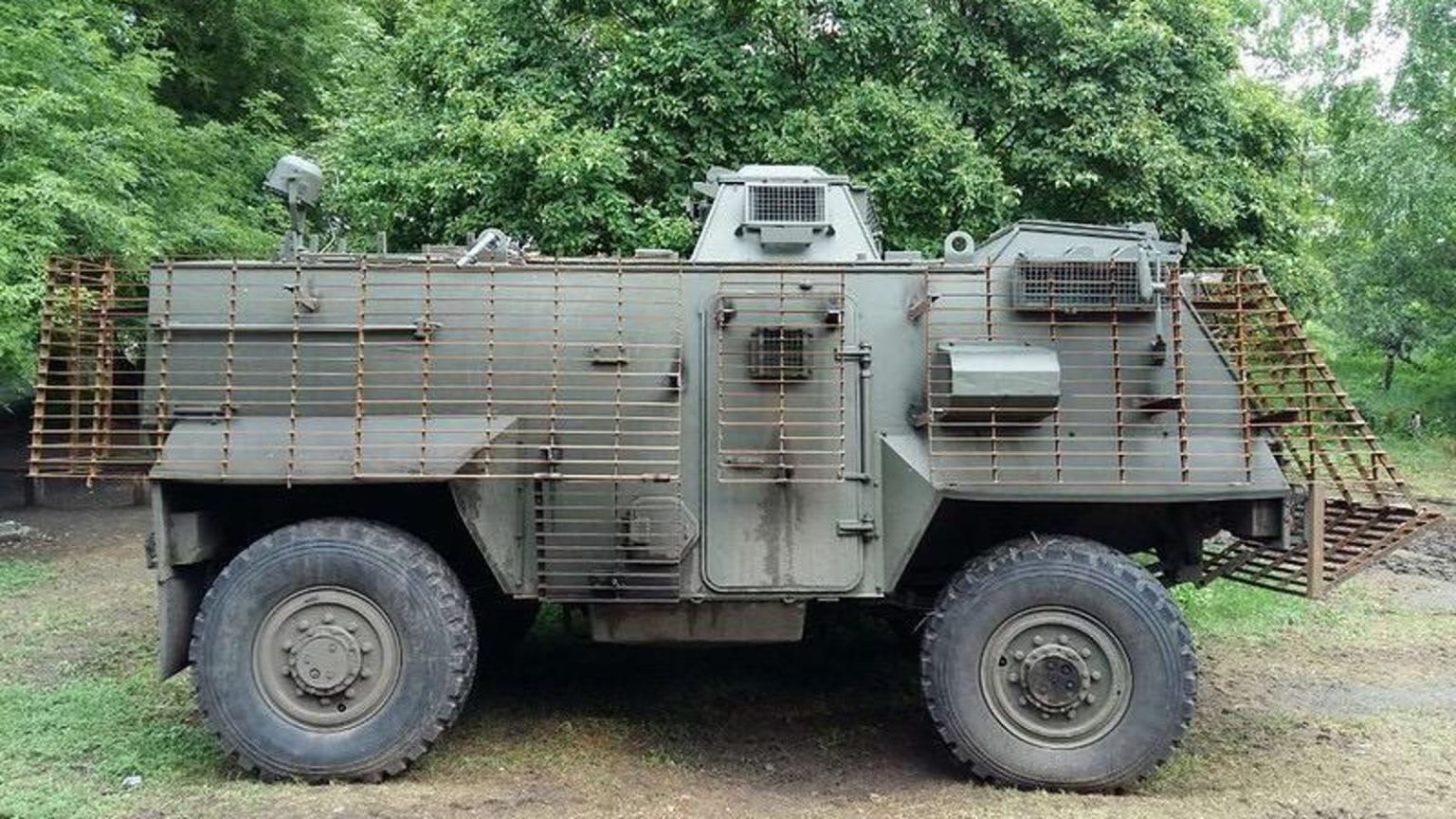In the 1970s, the British Army took a Bedford TM truck, added a welded steel body and pressed it into service as the AT105 Saxon personnel carrier.
The AT105 isn’t an infantry fighting vehicle, whose purpose is to transport infantry into battle and then support them with gunfire and missiles.
No, it’s a battle-taxi. The 11-ton, nine-person Saxon was supposed to get British infantry close to the battlefield, but not so close that the vehicle’s thin armor and lack of heavy firepower would doom it to swift destruction.
When a bunch of surplus Saxons landed in Ukrainian service in the months following Russia’s initial invasion of Ukraine in 2014, Ukrainian forces didn’t always have the luxury of choosing when and where to deploy their secondhand battle-taxis, however. More than a few times, they rolled into a direct fight with Russian forces.
Now fairly rare in an army that lately has received many thousands of heavier vehicles, the Saxon nevertheless played an important role.
It helped to protect Ukrainian troops in those eight years after Russia invaded and before Russia escalated its invasion, triggering the wider war that finally compelled foreign countries to throw their weight behind Ukraine—and to donate newer and better armored vehicles that finally rendered the AT105s redundant.
We don’t know for sure how Ukraine got its 75 Saxons. The British Army began retiring its roughly 500 vehicles in 2005. At least 75 wound up with a private dealer which, in 2013, sold them to the Ukrainian defense ministry—reportedly for the low low price of $3.8 million for the lot.
The Saxons arrived in Ukraine in two batches in 2015 and initially equipped four air-assault brigades and a marine brigade. Some functioned in their original roles as battle-taxis. Others became ambulances or command vehicles. A few got top-mounted machine guns. Some benefited from hastily-installed slat armor that can help to deflect incoming rockets and drones.
While the Saxons were “arguably obsolete,” according to weapons-historian Matthew Moss, “the Ukrainians themselves reportedly felt they were fairly decent vehicles—with the armor providing the expected level of protection.”
According to Moss, testing by the Ukrainian national guard in February 2015 showed that the armor could withstand light machine-gun fire. And that was good enough in most situations. Perhaps more importantly, Ukrainian crews found the Saxons to be fast, reliable and easy to operate.
At a time when Kyiv was struggling to rebuild and re-equip its dilapidated armed forces, the eminently functional AT105 solved a lot of problems. It didn’t help the infantry fight. But it did help the infantry get to a fight. “It’s clear that the Ukrainians thought at the time they were cost-effective, capable vehicles which they wisely didn’t push into close-combat roles,” Moss wrote.
But that doesn’t mean Ukraine’s Saxons didn’t find themselves in firefights. In the 25 months since Russia widened its war on Ukraine, the Ukrainians have lost at least 12 Saxons that the analysts at Oryx can confirm.
The last time we saw an active Ukrainian Saxon was back in January. It’s not enemy fire that seems to have rendered the AT105 functionally extinct in Ukraine. By last year, the Saxons that still were operational were in pretty bad shape.
Eight years is a long time at war for a 50-year-old vehicle, and the Ukrainians finally can replace the tired old workhorses with much better mine-protected armored trucks. “There have not been any recent sightings of the Saxons,” Moss explained, “and the U.K. and other supporting nations have now transferred or promised more modern and capable vehicles.”
Sources:
1. Matthew Moss: https://armourersbench.com/2022/05/22/saxon-apcs-in-ukraine/
2. Oryx: https://www.oryxspioenkop.com/2022/02/attack-on-europe-documenting-ukrainian.html
Read the full article here





